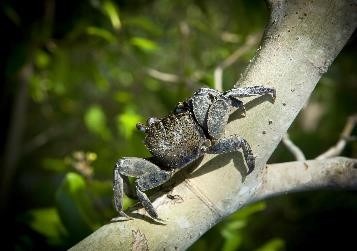Enhancing mangrove protection in the North Brazil Shelf
The coast between the mouth of the Amazon and the Orinoco rivers, also known as the North Brazil Shelf (NBS), is one of the world’s most extensive muddy shorelines. Over thousands of years, the accumulating coastal plain has formed expansive coastal swamps and mangrove systems.
Today, these coastal ecosystems are highly threatened by human activities and climate change. Unless space is maintained or provided, mangroves will be ‘squeezed’ between rising seas and hard flood protection levees. Factoring in conservation and restoration of mangroves as part of development and climate adaptation and mitigation planning will be critical to maintaining these ecosystems and the services they provide.
The NBS Mangrove Project (Setting the Foundations for Zero Net Loss of the Mangroves that Underpins Human Well-being in the North Brazil Shelf Large Marine Ecosystem ), was an 18 month project, funded by the Global Environment Facility (GEF) and implemented between Conservation International (CI) and IUCN to help establish a shared and multi-national process for an Integrated Coastal Management (ICM) in the NBS.
The project recognises the prevalence, socio-ecological importance and connectivity of mangroves in the retention and generation of key ecosystem services (fisheries, coastal protection, water quality, blue carbon, etc.) from which communities in the NBS countries are beneficiaries. The countries of Suriname and Guyana were prioritised to consolidate and improve the technical knowledge base necessary to further national and complementary regional coastal management strategies with neighbouring countries Brazil (Amapá state) and French Guiana.

Crab sits on a branch in the mangrove swamp. ©THPStock / Shutterstock
As a result, the project has developed a valuable baseline of knowledge and technical assessments as inputs towards a collaborative vision and a coordinated well-informed management of NBS mangrove systems, with emphasis on the information needs of Guyana and Suriname. At the same time, it explored the creation of a practical transboundary coordination mechanism between the countries of Guyana, Suriname, French Guiana, and Brazil towards the improved integrated coastal management of the extensive, ecologically connected yet vulnerable mangrove habitat of the NBS region.
If you want to learn more about mangroves in this region and view the reports generated from this project, check out the NBS Mangrove Project website here.
by: Emilio Cobo | IUCN South America